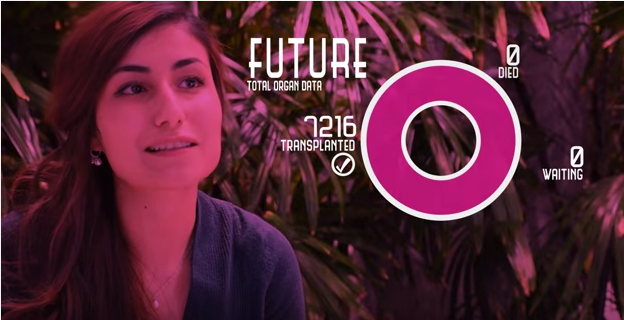The surprising things I learned about myself by making a science video
By Nika Shakiba
 Cramming six years of research into two minutes is no easy task. Using words that a 10th grader can understand is harder still.
Cramming six years of research into two minutes is no easy task. Using words that a 10th grader can understand is harder still.
This was the challenge issued by the Ontario Institute for Regenerative Medicine (OIRM) last fall, which ultimately led to the production of a short video summarizing my PhD research in Dr. Peter Zandstra’s lab at the University of Toronto.
It’s not too often that a scientist is offered a creative outlet whose goal is to shine a light on their research. So I jumped at the unique opportunity. Drawn initially by the chance to help make an animated science video, I didn’t realize that the creative aspects of the project – the animation plan, the script, etc. – would not be my biggest challenge after all.
OIRM’s idea was to provide a creative way to showcase the work taking place in Ontario’s stem cell and regenerative medicine labs by letting the PhD students and Postdoctoral fellows share their research. At first, the series didn’t even have a title – the name, Stem Cells, Inked came later, once the line-drawn style of animator Shelley Sandiford was chosen. But one of OIRM’s secondary aims was to give those of us selected a chance to also take an active role in the production of our video – and by extension, to learn more about science communication. And so, I also had the chance to provide input on the series name, as well as the storyboard, animation design and production.
Since the video was to focus on my research, my main goal was clear: distill my research into key messages that capture the impact of my work for the general public. Sounds easy enough – but for me, it was cause for reflection. It turns out that it would take me several iterations of the script to solidify the key messages I hoped viewers would take away. Finding the proper balance between background into the stem cell field and my own research was another key component. Ironically, through this iterative process I developed a deeper understanding of my own work by looking at it through the eyes of my fellow Canadians.
Beyond the messages about the science, which are at the forefront of the video, I wanted to show how the marriage of math and biology can create a synergy that has the power to push the boundaries of scientific advancement not just in my work, but in many areas of science. I am an engineer after all, and though most people picture engineers as building bridges or coding computers – as cool as those jobs may be – I wanted to show that engineers are applying their knack for problem solving in other lesser-known ways as well. I am a deep believer in collaborative science and in bringing together the talents of experts from various fields to promote out-of-the-box thinking. Who knows, maybe more young students will be turned on to science knowing that they can incorporate their love of math or writing or other areas into their career trajectory.
Beyond the personal growth and the fun I had making this video, my motivation to take part in this project came from the recognition that communication is at the heart of a scientist’s role. Though it can be tempting to lock ourselves in the lab, mixing reagents and admiring the impact of the data we produce, the scientist must engage with stakeholders to keep the cycle of learning turning. By investing our time in explaining our research to the public, to decision-makers and to our peers, not only do we as scientists develop a deeper understanding of our own work (as I did through this experience) but we also learn more about the greater public’s needs and expectations from scientific advancement. In the process, the public also develops an appreciation for science and it’s ongoing impact on our collective quality of life. We may even get lucky enough to capture the interest of future generations that will carry forward the scientific torch.
I’m honoured and grateful to have had the opportunity to share my research in a new way through this video project and admire OIRM’s commitment to engaging Canadians in the science they help to support. Those before me who have shared their passion for their respective fields have encouraged my love of science. Inspired by the great science communicators of our time – Neil deGrasse Tyson, Chris Hadfield and Brian Greene to name a few – I also have a great love for science outreach. In the future, I hope to continue my work in the realm of research while developing a deeper involvement in science communication.
Nika Shakiba is a PhD candidate at the University of Toronto, supervised by Dr. Peter Zandstra. Her research focuses on understanding heterogeneity in stem cell culture. She holds a BASc from University of Toronto, majoring in Biomedical Engineering. Nika is also passionate about science communication and outreach and is heavily involved with StemCellTalks, a national outreach initiative bringing the biology and ethics of stem cell research to high school students.
